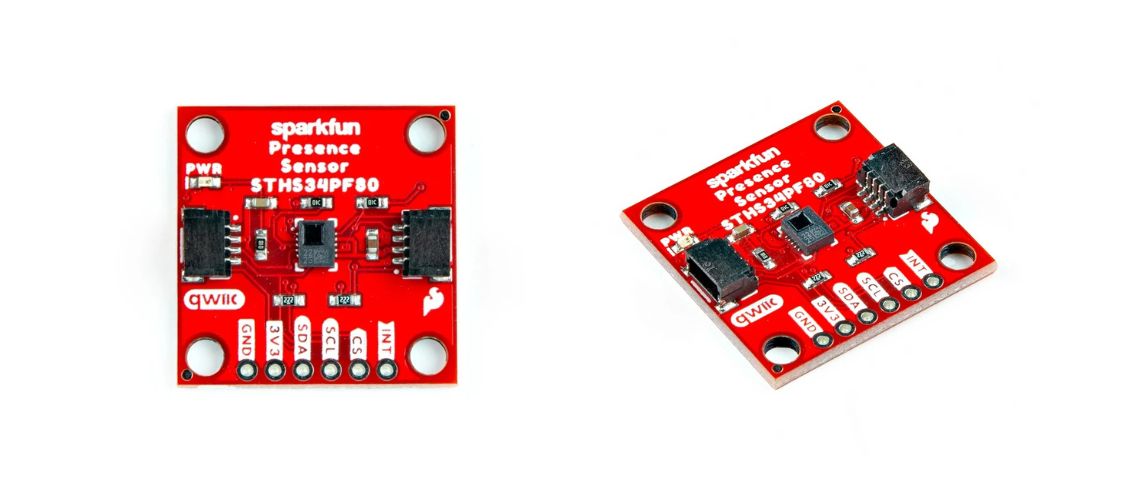Why did SparkFun’s Experiential Robotics Platform (XRP) settle on ST’s LSM6DSOX, and why does the answer involve much more than a bill of materials? SparkFun Electronics, a member of the ST Partner Program, provides development boards and platforms to expedite prototyping and facilitate the conception of a wide range of embedded systems, from basic IoT modules capturing data to more complex systems with AI capabilities. Hence, the company works with and promotes numerous sensor makers and semiconductor leaders. Moreover, the XRP Robot Kit is the fruit of the Experiential consortium. ST is a member, but we are far from the only one. Hence, let’s explore why our sensor landed in the XRP and why making prototyping more accessible is essential.
The XRP or the art of demystifying Robotics and µPython
From classroom to cutting-edge
The XRP makes robotics more accessible. At the heart of the platform is an inexpensive controller] and a tool-less self-contained kit that anyone can assemble in minutes, regardless of their experience level. Experiential also built a website and community to guide students and enthusiasts. It walks users through the creation of applications using a web editor, while a curriculum assists students in acquiring the expertise needed to understand what is happening behind the scenes. By the end of the course, students will have a solid grasp of complex robotics principles and advanced embedded systems and will be able to use popular languages like µPython.
From a sensor to sensible technology
To reach such a broad audience and be relevant to all experience levels, SparkFun and the Experiential consortium had to select devices that were “easy to use”. The term might be surprising when discussing a sensor, but it’s precisely what SparkFun shared, and it’s one of the reasons they chose the LSM6DSOX. Indeed, SparkFun and Experiential must be able to source the device easily, create abstraction layers rapidly, and allow even novice users to extract data from the MEMS for their applications. It requires detailed documentation, rock-solid drivers, and significant industry recognition, which the LSM6DSOC offered.
Too often, many companies working on embedded systems underestimate the importance of the “ease of use” of a sensor or microcontroller. However, the device and its ecosystem will have a significant impact on prototyping, development, and time to market. It is very rare for managers and other decision-makers to ask their technical team whether a particular component has proven drivers or reliable documentation. However, a project like XRP demonstrates how these factors can make a technology significantly more accessible and cost-effective. In fact, the experience with the LSM6DSOX was so successful that Experiential is looking at adding other ST sensors to their platform.
Beyond the XRP or the science of fast prototyping
Swapping MCUs
SparkFun’s relationship with ST extends far beyond the LSM6DSOX on the XRP, which might explain why the company wrote most of the robot’s sensor stack from scratch without relying on our code. Indeed, the ST Authorized Partner offers numerous development boards, such as the M.2 MicroMod systems that feature devices like the STM32F405 or the STM32WB5MMG. The MicroMod M.2 socket makes it extremely easy to swap devices, allowing for quick prototyping of different hardware configurations. It also opens the way for engineers with less experience to start with a platform that offers more accessible tools and learn from them before going to industry-standard applications like STM32CubeMX.
Swapping sensors
SparkFun is also popular for having a wide range of sensor boards that utilize its Qwiic connector. Whether engineers are looking to add a Time-of-Flight sensor like the VL53L1X, VL53L4CD, and VL53L5CX, or a human presence detection device like the STHS34PF80, to name a few, teams can swap sensors on SparkFun’s DataLogger IoT and get information in minutes. In our era of rapid prototyping, being able to get actionable data this fast means a significant reduction in prototyping costs and development times. It’s the reason why the DataLogger IoT comes with an embedded ISM330DHCX. Even without an additional card, users can collect information out of the box.
